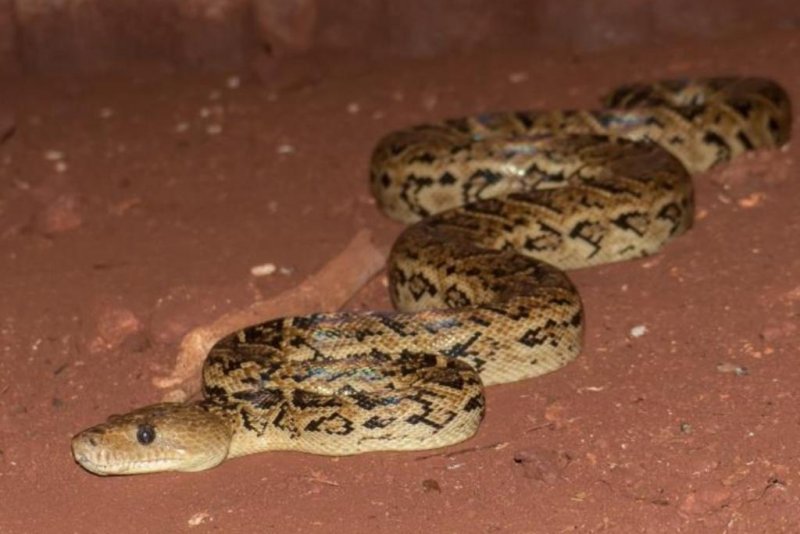A Cuban boa is seen near the entrance to a sinkhole cave in Cuba's Desembarco del Granma National Park. Photo by Vladimir Dinets/UT
May 23 (UPI) -- Snakes are surprisingly social animals. They lounge, sun and hibernate in groups. But they're mostly thought of as solitary predators. New research, however, suggests some snakes coordinate hunts.
The Cuban boa, Chilabothrus angulifer, is Cuba's largest endemic terrestrial predator. When scientists observed the hunting techniques of boas near bat caves, they found specimens sometimes team up to increase their likelihood of securing a meal.
Cuban boas regularly gather at the mouth of bat caves at dawn and dusk with hopes of snagging a bat traveling out or into their home base.
Scientists at the University of Tennessee observed boas hanging from the top of the cave entrance and waiting to snag a bat out of midair. When multiple boas gathered, the snakes arranged themselves in a wall-like fashion, making it more difficult for bats to avoid the snake's jaws.
Coordinated hunts were more successful than solitary hunts. Scientists found that when more snakes participated in the wall, each predator had to wait a shorter amount of time for a meal. Solitary hunters often went without a single bat.
Researchers shared their findings in the journal Animal Behavior and Cognition.
Watching serpent hunting tactics in the wild is difficult. Only a few species have been closely observed as they track and kill prey.
"It is possible that coordinated hunting is not uncommon among snakes, but it will take a lot of very patient field research to find out," Vladimir Dinets, a research assistant professor of psychology at Tennessee, said in a news release.
Unfortunately, finding and watching Cuban boas is becoming more difficult, as the snakes are hunted for food and the pet trade.
"I suspect that if their numbers in a cave fall, they can't hunt in groups anymore and might die out even if some of them don't get caught by hunters," Dinets said. "A few of these caves are in national parks, but there's a lot of poaching everywhere."















